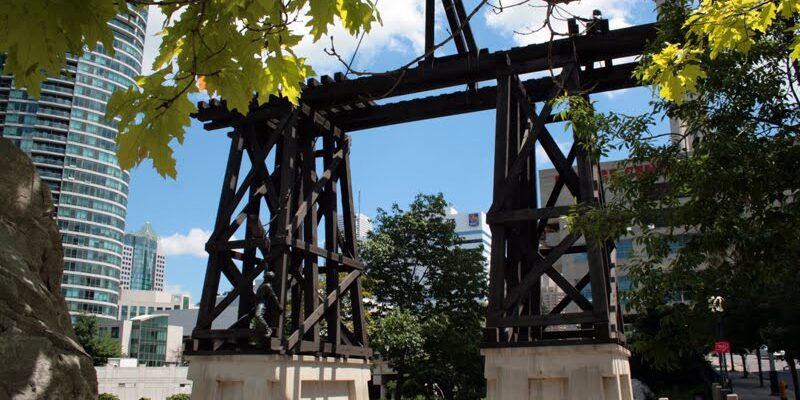Preserving a Seldom Told Part of Canada’s History
A short walk from the museum stands the Chinese Railroad Workers Memorial. This memorial commemorates an important part of history, and the people who made Canada’s transcontinental railway possible. The famous “Last Spike” photograph tells only one part of the story.
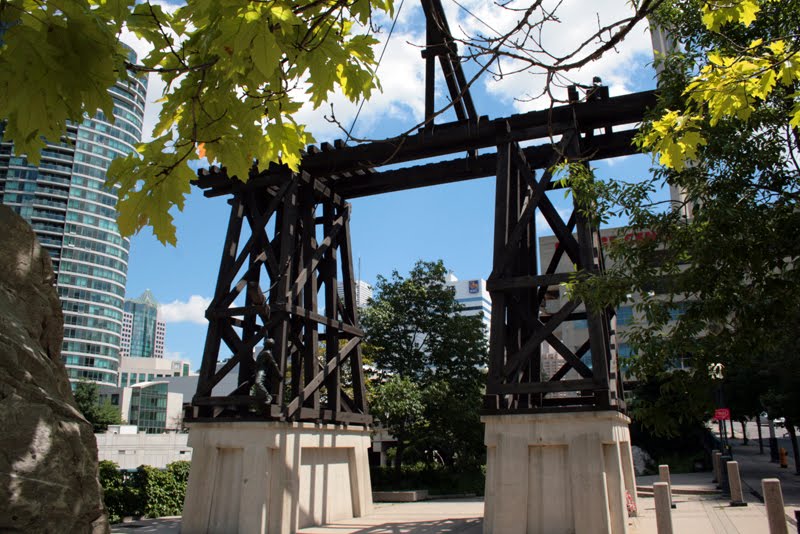
Monumental Remembrance
The powerful monument stands nestled in between the Rogers Centre and the railway corridor. It is located on the opposite side of the Rogers Centre from the Toronto Railway Museum at 4 Blue Jays Way. The monument to Chinese railway workers takes the form of part of a railway trestle. Above all, it acknowledges the contribution of thousands of Chinese railroad workers. They were key to the building of the first railway across Canada.
The site of the Chinese Railroad Workers Memorial is also significant in railway history. In 1860, the Grand Trunk Railway built a roundhouse on this site. That roundhouse was unusual because it was fully roofed over with a large dome. The Rogers Centre was not the first domed structure in this location.
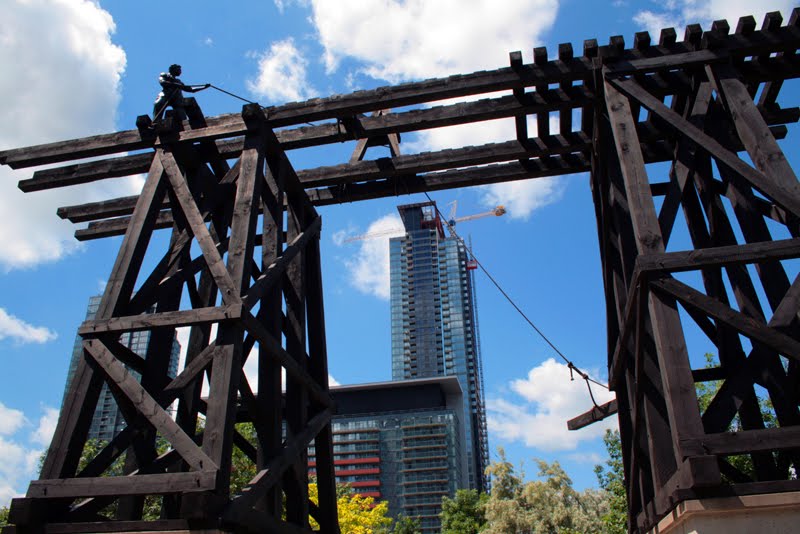
17,000 Chinese Railway Workers
When British Columbia joined the union in 1871, Canada agreed to build a rail line all the way to the Pacific coast. This astonishing feat was accomplished in just over four years largely due to the Chinese railway workers. Between 1881 and 1885, over 17,000 Chinese men came to Canada to work as labourers on the construction of the western section of the transcontinental railroad. Chinese workers were mostly concentrated on a 250-mile section in British Columbia contracted out to Andrew Onderdonk. It appears that approximately 700 of them were killed in industrial accidents largely due to unsafe working conditions. Chinese labourers worked in harsh conditions and for less than half the pay of their white coworkers. There are no Chinese labourers in the famous “Last Spike” photo taken by Alexander Ross.
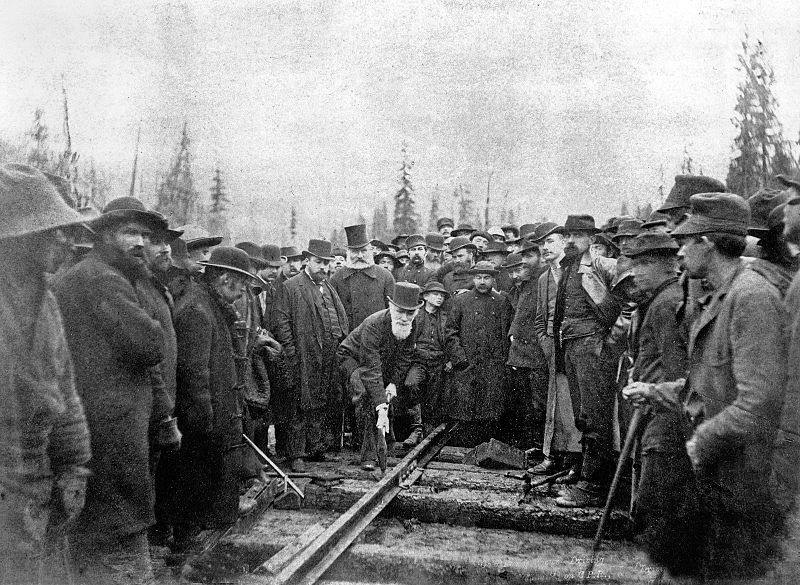
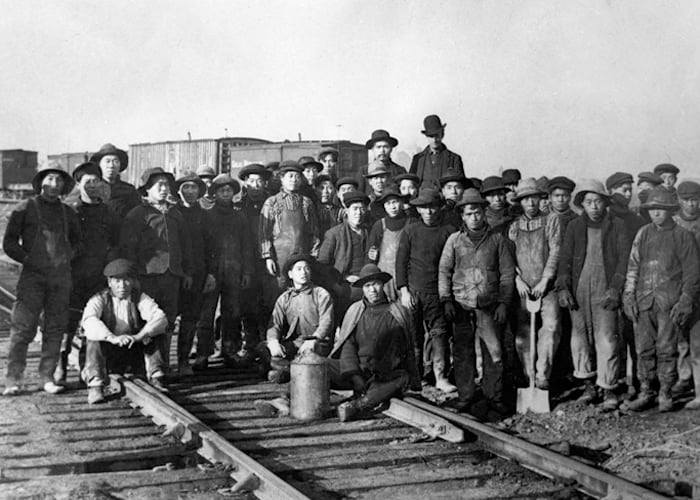
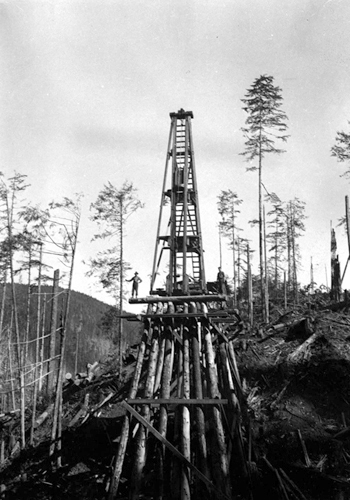
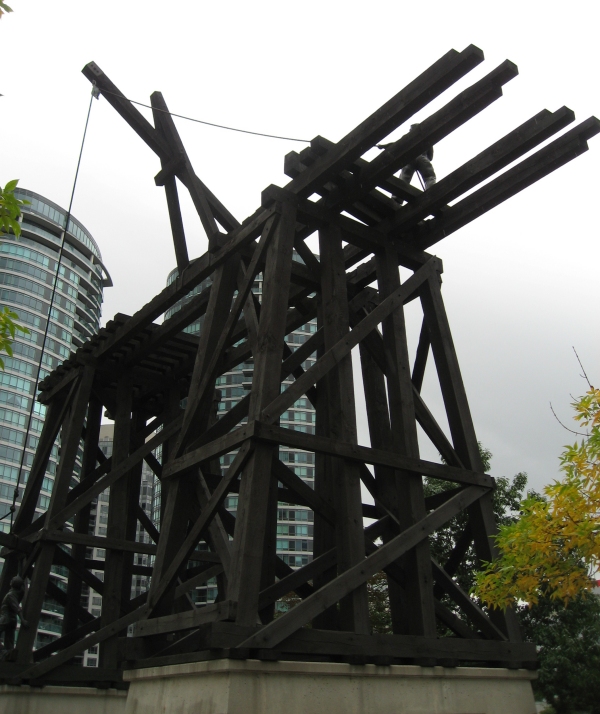
About the Chinese Railroad Workers Memorial
The Chinese Railroad Workers Memorial in Toronto was dedicated in 1989. It was built due to the efforts of Toronto businessman James Pon, then President of FCCRWC. The sculpture, designed by Eldon Garnet, depicts two life-sized workers precariously moving a beam into place to complete the construction of a railway trestle. The huge rocks at the base of the monument were transported to Toronto from Crowsnest Pass in the Rockies.
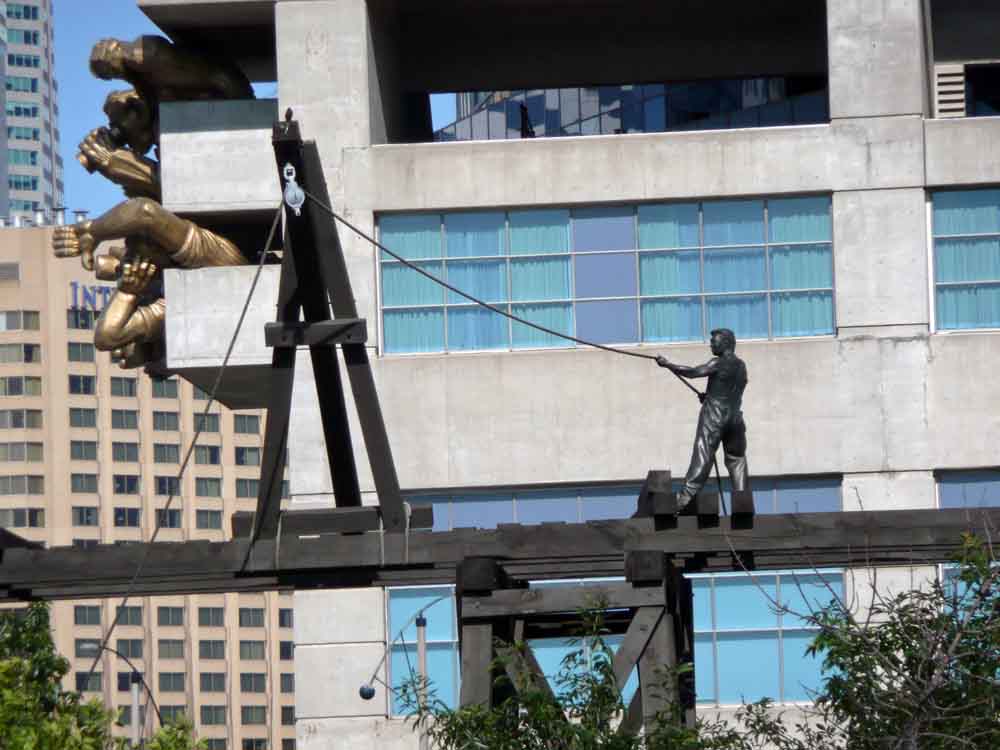
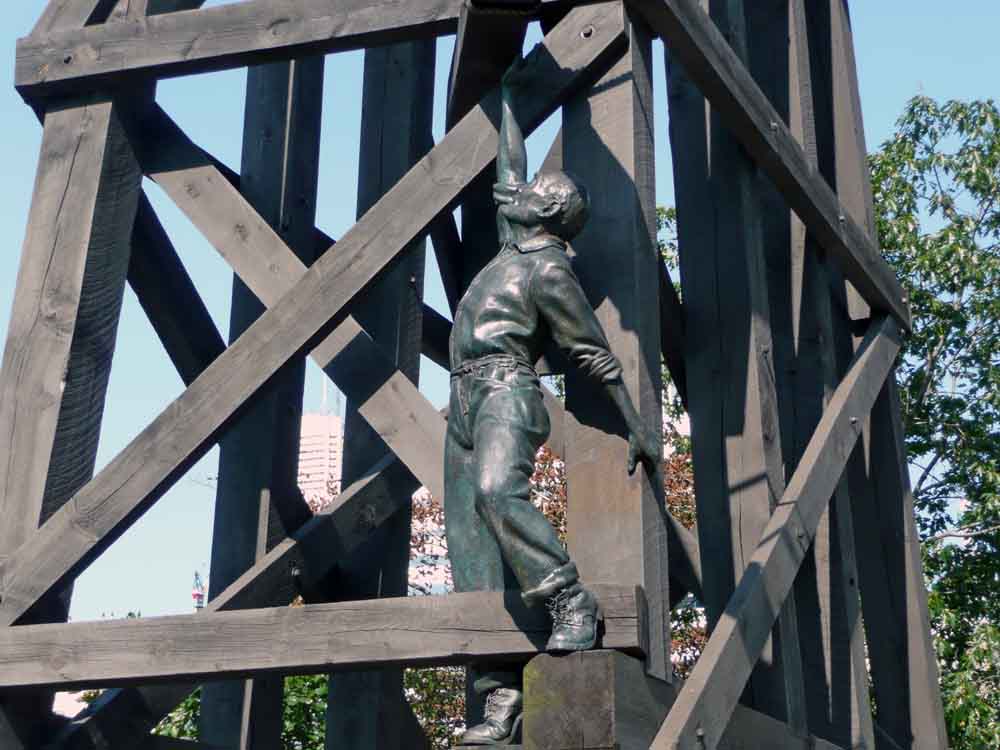
Memorial to Commemorate the Chinese Railway Workers in Canada
“Dedicated to the Chinese railroad workers who helped construct the Canadian Pacific Railway through the Rocky Mountains of Alberta and British Columbia thus uniting Canada geographically and politically.
From 1880 to 1885 seventeen thousand men from the province of Kwangtung, China came to work on the western section of the railway through the treacherous terrain of the Canadian Rockies. Far from their families, amid hostile sentiments, these men laboured long hours and made the completion of the railway physically and economically possible. More than 4,000 Chinese workers lost their lives during construction. With no means of going back to China when their labour was no longer needed, thousands drifted in near destitution along the completed track. All of them remained nameless in the history of Canada.”
We erect this monument to remember them. September, 1989″
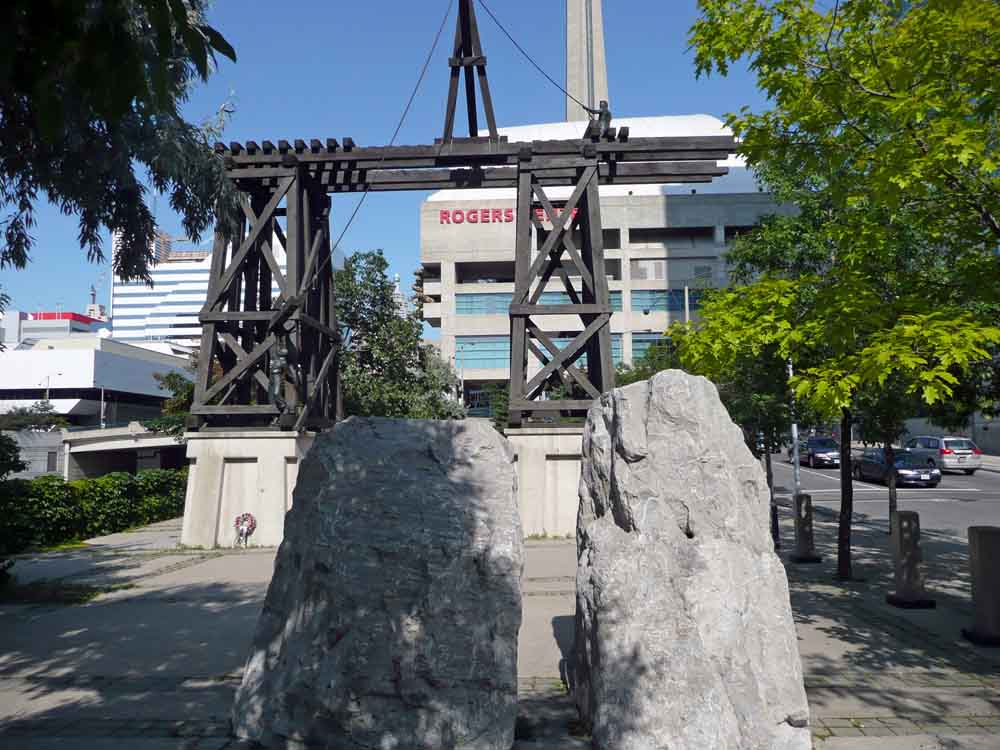
July 1 Commemoration
The Chinese Railroad Workers Memorial has become an important and moving rail landmark in the city. As a result, an impressive annual rededication ceremony is held every Canada Day and attracts hundreds of people. The Foundation to Commemorate the Chinese Railroad Workers (FCCRWC) hosts the event. As a result, the ceremony honours the Chinese lives that were lost during the railroad construction. Above all, it is to acknowledge the Chinese community’s contribution to the building of the transcontinental railway. In doing so, the FCCRWC brings attention to the racist legislation and suffering brought about from the Chinese Exclusion Act on July 1, 1923.
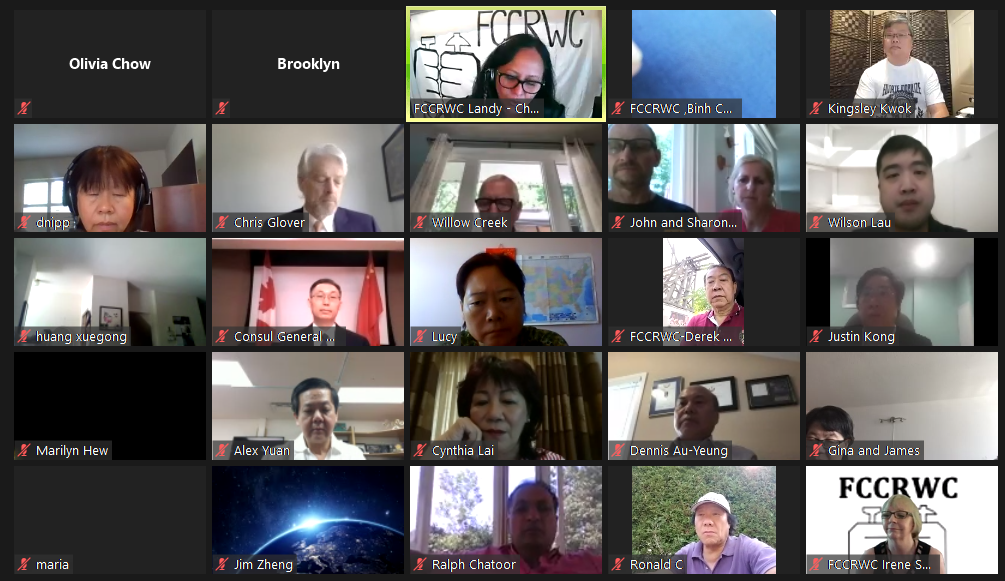
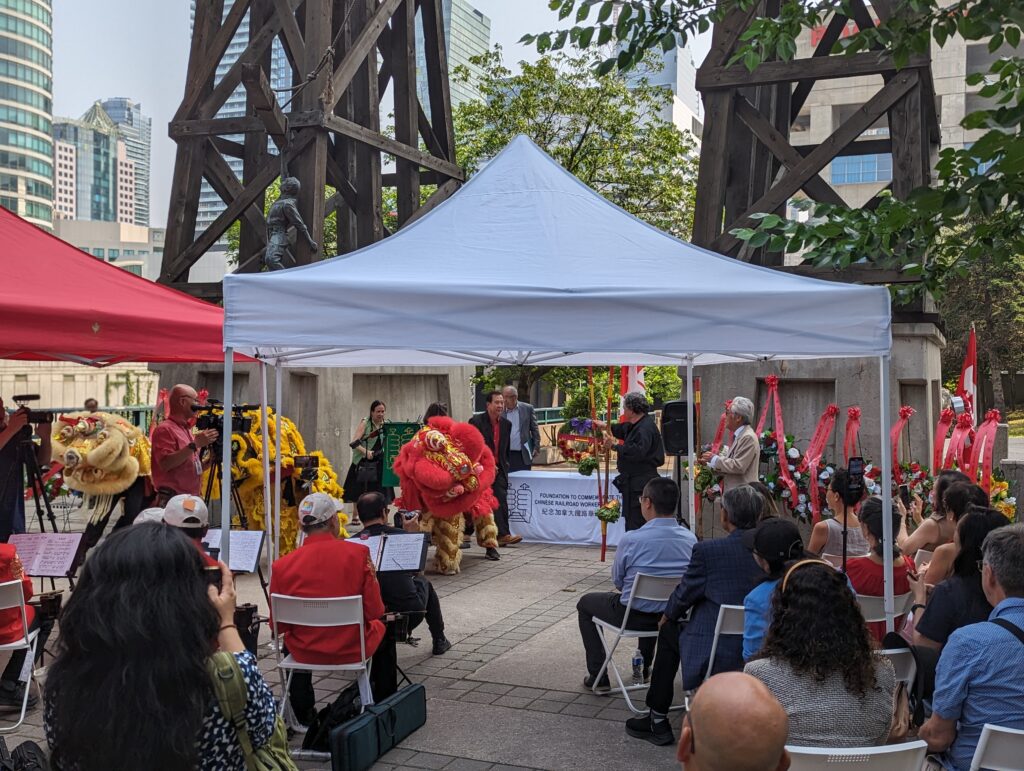
Lion dance at 2023’s ceremony. 2023 marked 100 years since the passing of the Chinese Exclusion Act in Canada.
2024’s annual ceremony will be held at the memorial and is free for anyone to attend. You can find event registration information here. The Toronto Railway Museum (TRM) is proud to participate in this annual Canada Day tradition. TRM is committed to telling the stories of the railways, and welcoming conversations of its varied experiences through its lecture series, exhibits and integrated programming. TRM’s mission is to learn from the past to make the future better.

